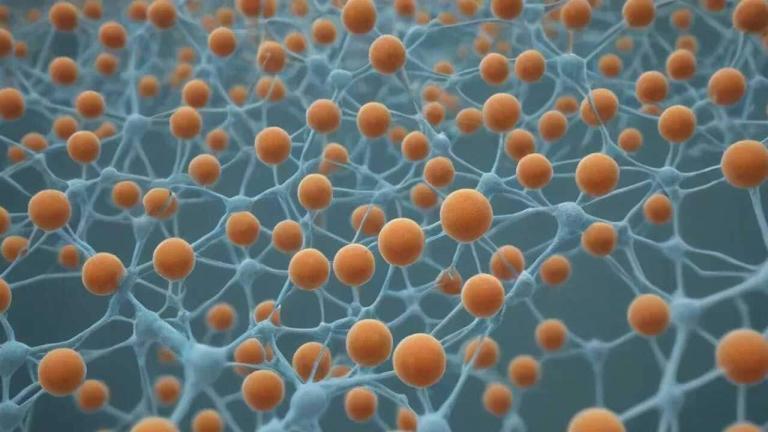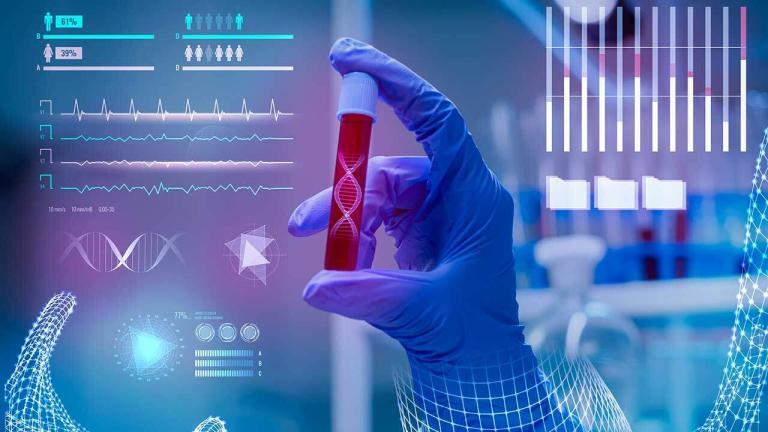
The debate between biologics and small molecule drugs is pivotal for clinicians, researchers, and patients alike. Each type of medication offers distinct advantages and limitations, influenced by their structural differences, mechanisms of action, and the intricacies of their development processes.
Small molecule drugs, known for their simplicity and broad application, contrast sharply with biologics, which are complex and targeted, offering cutting-edge treatment for hard-to-manage diseases.
In this article, we will discuss both drug types, examining their benefits, drawbacks, and optimal applications. By comparing key aspects such as safety, efficacy, cost, and accessibility, we aim to shed light on which type of drug might be superior.
What are Biologics?
Biologics, also known as biopharmaceuticals, are a class of therapeutic drugs that are produced using living organisms or contain components of living organisms. Biologics are composed of proteins, sugars, or nucleic acids or may be living cells and tissues.
They are manufactured through biotechnological methods and, in some cases, using recombinant DNA technology. Unlike traditional small molecule drugs that are chemically synthesized, biologics are extracted from biological sources or synthesized in living systems such as microorganisms, plant cells, or animal cells.
Biologics are a fast-growing segment of prescription drugs, and are expected to account for 55% of all innovative drug sales by 2027. The biologics market is expected to reach $399.5 billion by 2025.
Characteristics of Biologics
Biologics have revolutionized treatment paradigms across various disease areas, including oncology, rheumatology, endocrinology, and gastroenterology. These drugs include a wide range of products such as monoclonal antibodies, therapeutic proteins, vaccines, and cell and gene therapies.
Each biologic is unique, but they all share a common characteristic: they mimic, alter, or augment natural biological processes to treat or prevent diseases.
Pros of Biologics
Targeted Therapy:
Biologics offer highly targeted treatment options. They are designed to interact with specific components of the immune system or target specific pathways involved in a disease process. This high level of specificity generally means that biologics can be more effective and have fewer side effects compared to traditional drugs that might affect multiple pathways and cause unwanted side effects.
Treatment of Complex Diseases:
Many diseases that were previously considered untreatable or difficult to manage are now addressable with biologics. Conditions such as multiple sclerosis, various types of cancer, and rheumatoid arthritis have seen significant advances in treatment efficacy and patient outcomes due to biologics.
Reduced Drug-Drug Interactions:
Since biologics are metabolized through natural biological processes, they are less likely to interact with other medications. This is particularly beneficial for patients who are on multiple medications, which is common in older populations and those with chronic conditions.
Cons of Biologics
High Cost:
The development and production of biologics are complex and resource-intensive, leading to higher costs compared to conventional drugs. This makes biologics less accessible to many patients and places a significant burden on healthcare systems.
Administration Challenges:
Unlike small molecule drugs that can often be taken orally, most biologics require administration through injections or infusions. This can lead to issues with patient compliance, especially for those who are uncomfortable with needles or have difficulties accessing healthcare facilities for regular treatments.
Immunogenicity:
Biologics can induce an immune response in the body, leading to the production of antibodies against the drug. This immunogenicity can decrease the effectiveness of the treatment and can occasionally cause adverse reactions. The unpredictability of this response adds an element of risk to the use of biologics.
Storage and Handling Requirements:
Biologics often require specific storage conditions, such as refrigeration, to maintain their stability and efficacy. This can complicate the distribution and handling of these drugs, making them less ideal in areas without the necessary infrastructure.
The decision to use biologics involves a careful consideration of their advantages and disadvantages. While they offer powerful new treatment options that can significantly improve patient outcomes, the high cost, administration challenges, and potential for immunogenic reactions are significant barriers.
Advances in biologic formulations and delivery methods are ongoing, which may help mitigate some of these issues in the future.
Small Molecule Drugs: An Overview
Small molecule drugs are the traditional mainstay of the pharmaceutical industry and represent the majority of medications available on the market today. These compounds are defined by their low molecular weight, typically less than 900 Daltons, which allows them to easily diffuse across cell membranes.
This characteristic facilitates their ability to engage with a wide range of intracellular and extracellular targets, making them highly versatile in the treatment of various conditions.
The market size for global small molecule drug discovery was valued at USD 75.96 billion in 2022 and is expected to reach approximately USD 163.76 billion by 2032. This market is projected to experience a growth rate of 7.97% from 2023 to 2032.
Characteristics of Small Molecule Drugs
Small molecule drugs are generally synthesized chemically through processes that are well-established in the pharmaceutical industry. Their small size and chemical nature allow for precise control over their molecular structure, leading to high reproducibility and consistency in manufacturing. They are usually administered orally, which is convenient and enhances patient compliance, although some are also available in injectable forms.
Advantages of Small Molecule Drugs
Broad Applicability:
Small molecule drugs can be designed to interact with a wide variety of biological targets, making them effective against a diverse array of diseases, from infectious diseases to cancer to chronic conditions like hypertension.
Oral Administration:
One of the most significant advantages of small molecule drugs is their ability to be administered orally. Pills and capsules are easy to take, store, and transport, providing a level of convenience that biologic drugs typically do not offer.
Cost-Effectiveness:
The chemical synthesis processes used for small molecule drugs are well-established, leading to lower production costs compared to biologics. Additionally, the expiration of patents allows for the production of generic versions, further reducing costs and increasing accessibility.
Predictable Pharmacokinetics and Pharmacodynamics:
Due to their chemical nature and smaller size, small molecule drugs generally have well-understood and predictable behaviors in the body regarding absorption, distribution, metabolism, and excretion. This predictability facilitates the development of dosing regimens that maximize efficacy while minimizing side effects.
Disadvantages of Small Molecule Drugs
Off-Target Effects:
While small molecule drugs are effective in targeting specific biological pathways, their small size and ability to cross cell membranes can also lead to interactions with unintended targets, potentially causing side effects and adverse reactions.
Drug Resistance:
Particularly in the treatment of infectious diseases and cancer, there is a risk of developing resistance to small molecule drugs. As organisms mutate, they can become less susceptible to the effects of these drugs, necessitating the development of new medications or combination therapies.
Limited to Certain Drug Targets:
Small molecule drugs are often not suitable for targeting certain types of large or complex biological molecules, such as proteins or nucleic acids, which are better targeted by biologic drugs.
GlobalData forecasts that biologics will overtake small molecules by $120 billion by 2027. Despite the growing prominence of biologic drugs, small molecule drugs continue to be critically important in healthcare. Their versatility, ease of administration, and cost-effectiveness make them the first line of treatment for many common and acute conditions. They are particularly important in global health contexts, where their stability and ease of distribution are crucial in low-resource settings.
Similarities Between Small Molecules and Biologics
While small molecule drugs and biologics are often highlighted for their differences in composition, manufacturing, and mechanisms of action, there are fundamental similarities between these two classes of therapeutics that underscore their shared goals in modern medicine. Both aim to alleviate, cure, or manage diseases, and they operate within the same regulatory environments. Here, we explore the commonalities that exist between small molecule drugs and biologics.
Shared Therapeutic Goals
Both small molecule drugs and biologics are developed with the primary goal of treating and managing diseases. Whether it’s chronic conditions like diabetes, acute infections, or complex diseases such as cancer, both types of drugs aim to improve patient health outcomes.
A common goal for both small molecules and biologics is to provide symptom relief to patients. This is crucial in enhancing the quality of life for those suffering from chronic pain, inflammation, or other debilitating symptoms associated with various diseases.
Regulatory Oversight
Both small molecules and biologics are subject to rigorous regulatory scrutiny before they can be marketed. Regulatory agencies like the U.S. Food and Drug Administration (FDA) and the European Medicines Agency (EMA) ensure that both types of drugs meet high standards for safety, efficacy, and quality.
The development of both small molecules and biologics involves extensive clinical testing. Phase I, II, and III trials are required to determine the safety and efficacy of the drugs. Although the specific challenges and methodologies may differ due to their physical nature, the overarching process of clinical validation is quite similar.
Mechanisms of Action
Both small molecules and biologics often work by targeting specific molecules or pathways involved in a disease process. Small molecules may inhibit enzymes or block receptors, while biologics might bind to proteins or antigens. This targeted approach is intended to minimize side effects and maximize therapeutic benefits.
A significant area of overlap is the use of both drug types in immunomodulation. Certain small molecules and biologics are designed to modify the immune response, a common strategy in the treatment of autoimmune diseases and cancer.
Innovation and Development
The discovery and development of both small molecules and biologics are research-intensive processes that require substantial investment in time and resources. Both fields are characterized by a continuous search for new therapeutic targets and the development of innovative approaches to drug design and delivery.
Advances in technology impact both domains. For example, improvements in computational modeling benefit small molecule drug design, while advancements in genetic engineering enhance biologic drug development. Both fields benefit from new technologies in bioinformatics, genomics, and proteomics.
Market Presence
According to a 2021 Medicine in Drug Discovery paper, small molecules account for around 90% of all drugs sold globally. However, in 2022, 63% of small molecule drugs and 87% of biological products had only one manufacturer.
Both types of drugs hold significant shares in the global pharmaceutical market and are essential in the treatment regimens of many conditions. They often coexist in treatment guidelines, sometimes being used in combination to leverage the strengths of each.
There remains a continued medical need for innovations in both small molecules and biologics, driven by factors like aging populations, emerging health challenges, and the ongoing need for better, more effective treatments.
Challenges and Improvements
Developers of both small molecules and biologics face challenges such as the need for better specificity, reduced side effects, and overcoming drug resistance. The complexity of diseases often requires that researchers for both types of drugs continuously innovate and improve their offerings.
Both small molecules and biologics depend on sophisticated supply chains and distribution networks to reach patients globally. This includes the need for maintaining quality control, managing logistics, and ensuring that drugs are available to patients when and where they are needed.
Ethical and Economic Considerations
Both types of drugs raise similar ethical issues, including drug pricing, access to medicine, and the balance between profit and patient care. These issues require thoughtful consideration to ensure that treatments are accessible and affordable.
Both small molecules and biologics significantly contribute to the economic landscape of healthcare. They drive research funding, create jobs, and are pivotal in the economic strategies of pharmaceutical companies and countries.
Differences Between Small Molecule Drugs and Biologics
When evaluating therapeutic options, understanding the distinctions between small molecule drugs and biologics is crucial. These differences are grounded in their molecular structure, mechanism of action, production methods, and more. Here’s a detailed comparison to elucidate these aspects:
1. Size and Structure
Small Molecule Drugs: Characterized by a lower molecular mass, small molecule drugs have simpler, more stable chemical structures. This stability and simplicity allow for consistency across various manufacturing processes, facilitating easier production and quality control.
Biologics: In contrast, biologics are larger with a higher molecular mass and are derived from complex biological structures. The intricacies of their composition make them susceptible to degradation, and their quality and efficacy are highly dependent on precise manufacturing processes.
2. Mechanism of Action (MOA)
Small Molecule Drugs: These drugs typically interfere with biochemical reactions, such as blocking receptors or inhibiting enzymes. Their mechanisms are usually well-defined, contributing to their widespread use in treating a variety of conditions.
Biologics: On the other hand, biologics operate on a cellular and genetic level, affecting protein-protein interactions and gene expression. Their actions are intricately linked to the immune system, requiring a thorough understanding of their complex mechanisms to ensure effective treatment.
3. Disease Targets
Small Molecule Drugs: Broadly used across a spectrum of acute and chronic conditions, small molecule drugs are versatile in addressing issues from infections and psychiatric conditions to cardiovascular health.
Biologics: These are primarily employed in the treatment of complex, hard-to-treat diseases such as cancer, autoimmune diseases, and genetic disorders. Biologics offer targeted therapy aimed directly at underlying biological pathways, providing potentially revolutionary treatment options for conditions that have been challenging to manage with traditional small molecule approaches.
4. Selectivity and Safety
Small Molecule Drugs: Small molecule drugs often have a broad range of action, which can result in interactions with multiple targets within the body. This extensive interaction profile can lead to off-target effects, where the drug affects sites other than the intended target, potentially causing unwanted side effects and toxicity.
The broad action spectrum of small molecules can increase the likelihood of adverse effects and drug-drug interactions, especially in polypharmacy scenarios where patients are taking multiple medications.
Biologics: Selectivity: Biologics are renowned for their high specificity, which generally results in fewer off-target effects. They are designed to target very specific components of biological pathways, which minimizes interactions with non-target sites and reduces the risk of unintended side effects.
Despite their specificity, biologics can trigger immunogenic responses. The immune system may recognize these large, complex molecules as foreign, potentially leading to the production of antibodies against the biologic. This reaction can diminish the drug’s effectiveness and lead to adverse immune reactions.
5. Production and Quality Control
Small Molecule Drugs: Manufactured through straightforward chemical synthesis, small molecule drugs benefit from well-established and highly reproducible production processes. This standardization makes it easier to maintain consistent drug quality across different batches and manufacturing sites.
The simplicity of their chemical structure allows for easier quality control measures, as the compounds can be thoroughly characterized and verified using conventional analytical techniques.
Biologics: Production: Biologics require the use of living cells for their production, which introduces variability and complexity into the manufacturing process. The biological systems used for production can be sensitive to slight changes in manufacturing conditions, leading to batch-to-batch variability.
The complexity and heterogeneity of biologics make consistent quality control more challenging. The structure of biologics can be altered by manufacturing conditions, and slight variations can significantly impact the therapeutic properties of the drug.
6. Structural Assessment and Permeability
Small Molecule Drugs: The structure of small molecule drugs can be easily determined using traditional analytical methods. This clarity allows for precise replication and understanding of how the drug interacts with its target.
Generally, small molecules are highly permeable, which enables them to easily cross cell membranes and reach intracellular targets. This characteristic is crucial for drugs that act inside cells or need to be absorbed into the bloodstream through the gastrointestinal tract.
Biologics: The structural determination of biologics is complex and often not fully achievable. Biologics consist of large molecules like proteins, which can fold into intricate three-dimensional shapes that are difficult to characterize completely.
Due to their large size and complex structure, biologics are typically less permeable. They often cannot cross cell membranes effectively, which can limit their ability to reach some intracellular targets and requires them to act at the cell surface or extracellularly.
7. Administration and Pharmacokinetics (PK)/Pharmacodynamics (PD)
Small Molecule Drugs: These drugs are often administered orally, which is a straightforward and preferred route for many patients due to convenience. Oral administration enhances patient compliance and facilitates the integration of treatment into daily life.
Small molecule drugs typically exhibit predictable PK and PD profiles. This predictability allows for relatively simple dosing schedules and makes it easier to manage treatment, adjusting doses based on well-understood parameters such as half-life, absorption rates, and interactions.
Biologics: Biologics usually require administration via injection or infusion. This method can complicate treatment protocols, as it often necessitates visits to healthcare facilities and may reduce patient compliance.
The PK and PD of biologics are less predictable due to their larger size and structural complexity. Modifications like glycosylation or PEGylation are frequently needed to improve their pharmacological profiles, such as increasing stability, reducing immunogenicity, or modifying the drug’s half-life.
8. Stability and Storage
Small Molecule Drugs: Generally, small molecule drugs are chemically stable and resistant to heat, which allows for easier handling and storage. Most small molecule drugs can be stored at room temperature, which simplifies logistics and accessibility.
Biologics: Biologics are often sensitive to heat and can degrade if not stored properly. This sensitivity is due to the complex and delicate nature of the biological molecules from which they are made. Biologics typically require refrigeration or even freezing to maintain their structural integrity and efficacy. These storage requirements can limit the availability of biologics in settings without the necessary infrastructure.
9. Market and Exclusivity
Small Molecule Drugs: There is a robust market for generic versions of small molecule drugs. Once the patent protection expires, generics can be produced, significantly reducing the cost of these drugs. Small molecule drugs benefit from exclusivity periods that protect them from competition, typically for about five years. After this period, the market opens to generic competition, which can drive down prices by approximately 80%.
Biologics: The market for biosimilars, which are analogous to generics for biologics, is growing but remains complicated. Replicating biologics accurately is more challenging due to their complexity. Biologics enjoy a longer period of exclusivity, generally around 12 years, due to the higher investment and complexity involved in their development. The cost reduction achieved through biosimilars is typically in the range of 20-30%, less dramatic compared to generics due to the intricacies and high costs of production.
10. Pricing
Small Molecule Drugs: These drugs are generally less expensive to produce, owing primarily to their straightforward chemical synthesis processes. The availability of generics significantly lowers costs further, making them more accessible to a broader range of patients.
Biologics: In contrast, biologics are typically more expensive due to the complexity of their production, which involves sophisticated techniques and living cells. Additionally, the extensive research and development required to ensure their efficacy and safety contribute to higher costs. This makes biologics less accessible and increases healthcare expenses, particularly in the absence of widespread biosimilar options.
Here’s a table summarizing the key differences between small molecule drugs and biologics:
| Feature | Small Molecule Drugs | Biologics |
| Size and Structure | Smaller, simpler chemical structures | Larger, complex biological structures |
| Mechanism of Action | Often well-understood; may interfere with biochemical reactions | Target specific biological processes; often involve immune modulation |
| Disease Targets | Broad range including acute and chronic conditions | Typically used for complex, hard-to-treat diseases |
| Selectivity | Lower selectivity; potential for off-target effects | Higher specificity; less likely to cause off-target effects |
| Safety | Potential toxicity due to off-target effects | Possible immunogenic responses |
| Production | Straightforward chemical synthesis | Requires living cells; complex manufacturing processes |
| Quality Control | Easier to standardize and reproduce | More challenging due to biological variability |
| Structural Assessment | Easily determinable structure | Complex and often not fully characterizable |
| Permeability | High; easily crosses cell membranes | Lower; challenges in reaching certain targets |
| Administration | Mostly oral, some injectable | Primarily injections or infusions |
| Pharmacokinetics (PK)/ Pharmacodynamics (PD) | Predictable | Less predictable due to size and complexity |
| Stability and Storage | Generally stable and heat-resistant; stored at room temperature | Heat-sensitive; requires refrigeration or freezing |
| Market and Exclusivity | Established generic market; significant cost reductions after patent expiry | Growing biosimilar market; complex replication; smaller cost reductions |
| Cost | Generally less expensive | Typically more expensive due to production and research costs |
Which Are Better: Biologics or Small Molecule Drugs
When comparing biologics and small molecule drugs, determining which is “better” largely depends on the specific medical needs and circumstances they address.
Small Molecule Drugs are generally lower in cost, thanks to easier production processes and the prevalence of generics, which significantly reduce prices post-patent expiry. Their simple molecular structure allows for oral administration, making them convenient for patients to use and enhancing compliance.
They are versatile, effective in treating a wide range of conditions from acute to chronic, and have well-understood mechanisms of action. However, their broad activity spectrum can lead to off-target effects and potential toxicity, especially with long-term use.
Biologics, on the other hand, offer targeted treatments particularly useful in complex diseases such as cancer, autoimmune disorders, and genetic conditions that have not responded well to traditional small molecule therapies.
Their specificity reduces the likelihood of off-target effects, leading to potentially safer long-term outcomes. However, biologics are more expensive due to intricate manufacturing requirements and extensive research needed to ensure safety and efficacy. They also require injection or infusion, which can be less convenient and require special storage conditions, impacting their accessibility and use.
How to Make the Choice? Factors to Consider
Choosing between biologics and small molecule drugs involves careful consideration of several key factors tailored to the patient’s specific medical conditions, the characteristics of the drug options available, and the practical aspects of treatment administration and costs.
1. Disease Complexity and Severity
The nature of the illness is crucial. For complex, chronic, or previously untreatable diseases such as certain cancers or autoimmune diseases, biologics may offer superior efficacy due to their targeted mechanisms of action. In contrast, small molecule drugs are often sufficient for more common and less complex conditions.
2. Target Specificity and Side Effects
Biologics provide high specificity, potentially reducing the risk of off-target effects and adverse reactions associated with broad-acting small molecule drugs. However, biologics can be immunogenic, leading to unique side effects like immune system reactions. The decision should weigh the benefits of targeted action against potential side effects.
3. Administration and Compliance
Consider the method of administration that best fits the patient’s lifestyle. Small molecule drugs are usually oral and easily incorporated into daily routines, enhancing compliance. Biologics often require injections or infusions, possibly necessitating frequent healthcare visits, which could be challenging for some patients.
4. Cost and Accessibility
Evaluate the financial impact. Biologics are generally more expensive due to complex manufacturing processes and lack of generics, which could be a deciding factor for patients without comprehensive insurance coverage. Small molecule drugs are usually less expensive and widely available.
5. Long-term Management
For long-term therapies, the stability and ease of use of small molecule drugs might be preferable. However, for diseases that benefit from the precise targeting of biologics, the higher cost and administration burden may be justified by superior outcomes.
Integration and Management
While each of these components is critical in its own right, the integration and management of all these supplies is what ensures the success of a clinical trial. Supply chain managers must coordinate the logistics of getting the right supplies to the right place at the right time.
They also need to navigate complex regulatory landscapes and manage relationships with suppliers and trial sites.
Closing Thoughts
Understanding the differences between biologics and small molecule drugs is vital for healthcare providers, researchers, and patients to make informed decisions about treatment options. Each class of drug has its specific advantages and challenges, dictated by their inherent properties and the nature of their development and application in medical practice.
The choice between biologics and small molecule drugs is not about which is better universally, but which is more appropriate for a particular patient’s condition. Small molecule drugs are advantageous for broad applications and cost-effectiveness, making them suitable for common and uncomplicated health issues.
Biologics are preferable for targeting specific, difficult-to-treat conditions where precision medicine is crucial, albeit at a higher cost. Each type has its place in modern medicine, and the decision must be tailored to individual patient needs, balancing factors like disease specificity, potential side effects, and cost.







